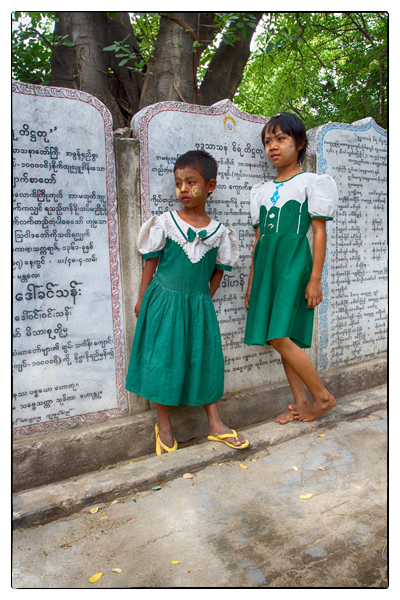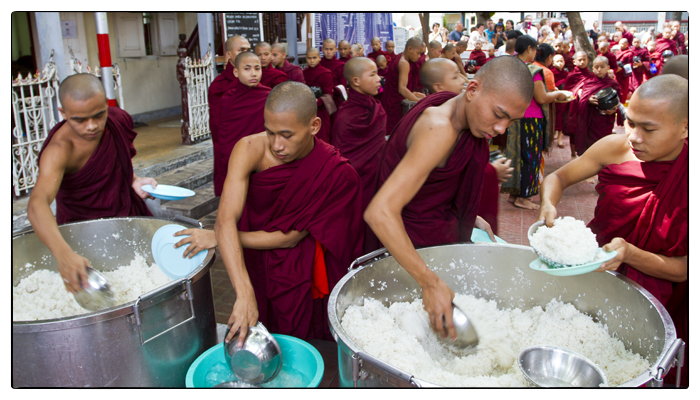Still looking for my personal Buddha, the Thoughtful Buddha known as Pang Rumpueng, I asked Sai if there was a market in Mandalay that specialized in Buddha images.
“Yes,” he said. “There is a street—Marble Street—where they make thousands and thousands of Buddhas by hand.”
Well this sounded promising. So we got a taxi and went to Marble Street. And let me just say that once you’re there, you’ll know exactly why they call it Marble Street. Down a long dirt road covered in fine white dust were literally dozens of workshops where laborers roughed out, chiseled, refined, polished, and washed Buddhas out of marble—Reclinging Buddhas and Enlightened Buddhas and Calling the Earth Buddhas. Some were no more than an inch or two tall; some were larger than life.
It looked like a nasty job. Marble dust was as thick as London fog everywhere and very few of the workers I saw wore masks. The white powder coated their hair, their face, their arms—everywhere. I can’t imagine this is good for you.
We popped in to one shop after another asking if they had a Thoughtful Buddha image. Everyone shook their head no. Imagine, a whole street filled with Buddhas and not a single Thoughtful Buddha to be found. Very disappointing.
















Recent Comments